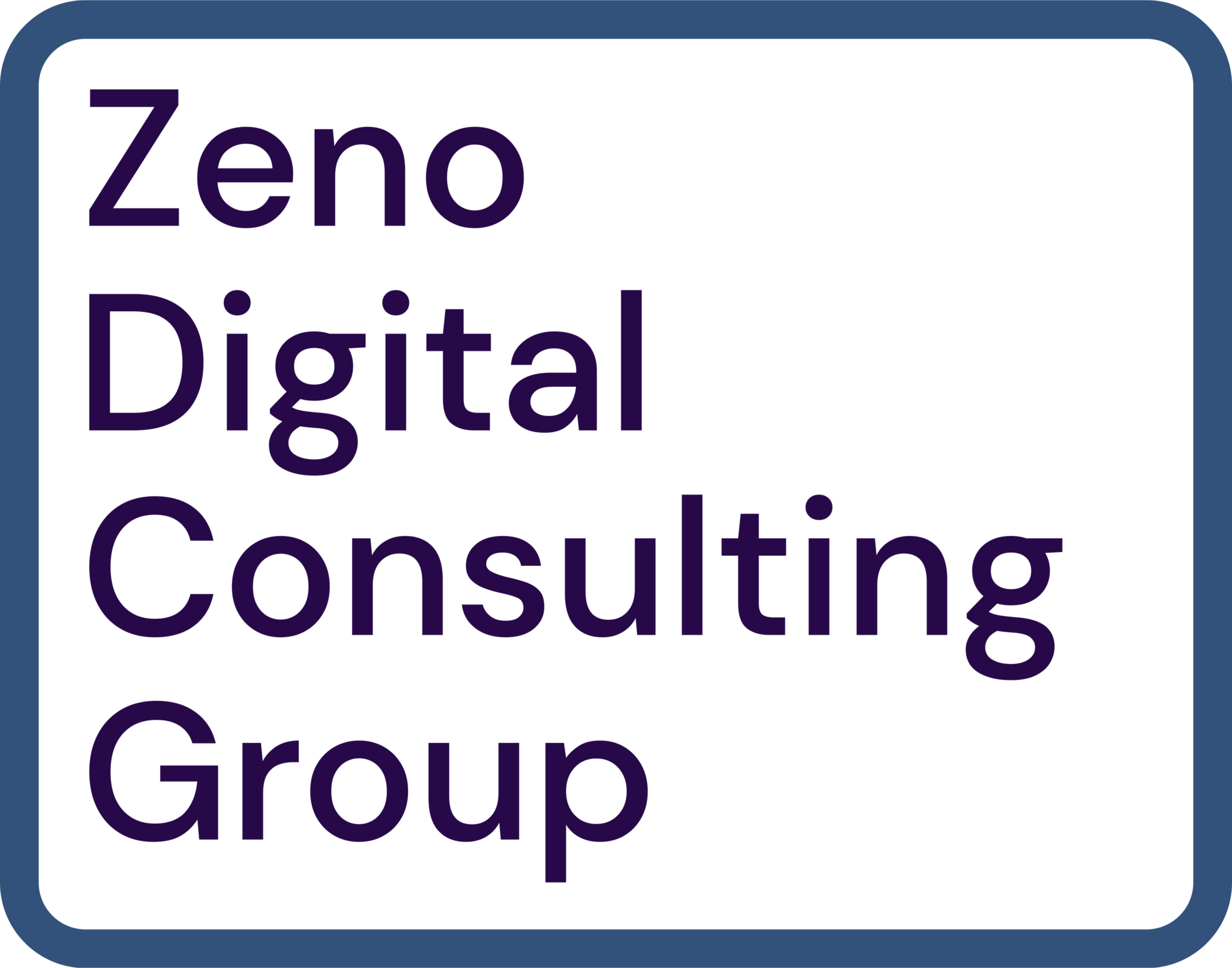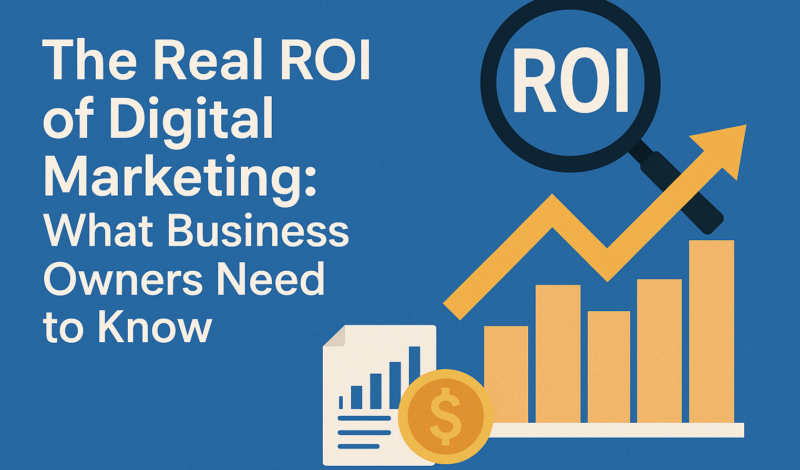Understanding the Real ROI of Digital Marketing
In today’s digital era, business owners are increasingly investing in digital marketing strategies to amplify their reach and engagement. However, understanding the real return on investment (ROI) from these efforts can be complex yet crucial for long-term success. ROI in digital marketing is not merely about the immediate financial gains. It encompasses a broader spectrum of metrics that collectively contribute to a business’s growth and sustainability.
One of the key factors in determining the real ROI is the ability to track and measure performance across various platforms. Tools like Google Analytics and social media insights play a pivotal role in providing data on traffic sources, conversion rates, and user engagement. By analyzing these metrics, business owners can gain a clearer picture of how their digital marketing efforts translate into tangible outcomes. For instance, an increase in website traffic due to successful search engine optimization (SEO) strategies can signify enhanced brand visibility, which, though not immediately reflected in revenue, sets the stage for future sales and customer loyalty.
Furthermore, digital marketing offers unparalleled precision in targeting and personalization, allowing businesses to engage with their audience more effectively than traditional methods. This capability enhances customer experience and fosters stronger relationships, which are integral components of long-term ROI. It’s essential for business owners to recognize that while the financial returns might not be instant, the cumulative benefits of a robust digital marketing strategy—improved brand recognition, customer retention, and market expansion—are invaluable.
Ultimately, the real ROI of digital marketing is measured not just by immediate profits but by the strategic advancements it enables. Businesses that understand and leverage these insights are well-positioned to thrive in an increasingly competitive digital landscape.
Beyond Clicks and Impressions: Measuring True Success
In the ever-evolving landscape of digital marketing, it’s easy for business owners to become enamored by the allure of clicks and impressions. These metrics are indeed a part of evaluating campaign performance, but they only scratch the surface of what true success looks like. To understand the real return on investment (ROI) of digital marketing, one must delve deeper into more meaningful and actionable metrics.
Clicks and impressions are indicative of the reach and initial engagement of your campaigns, yet they do not unequivocally translate into business growth. Instead, business owners should focus on metrics that reflect the actual impact on the bottom line. Conversion rates, for instance, provide insights into how effectively your digital marketing efforts are turning prospects into paying customers. By analyzing these rates, you can determine which strategies are most effective in driving sales and which may need refinement.
Moreover, customer lifetime value (CLV) is a critical metric that goes beyond one-time sales, offering a long-term perspective on the value each customer brings to your business. By understanding CLV, business owners can tailor their marketing strategies to nurture customer relationships, driving repeat sales and fostering loyalty.
Another vital aspect is the cost per acquisition (CPA), which measures the financial investment required to gain a new customer. A lower CPA indicates a more efficient marketing strategy, allowing businesses to allocate resources more effectively.
Ultimately, the true success of digital marketing is measured not just by immediate metrics like clicks and impressions, but by a comprehensive understanding of how these efforts contribute to sustained business growth. By focusing on these deeper metrics, business owners can make informed decisions that align with their long-term goals.
Identifying the Most Valuable Digital Marketing Channels
In the complex realm of digital marketing, determining the most valuable channels for your business is paramount to achieving optimal return on investment (ROI). With a plethora of options available—from social media platforms to search engine optimization and beyond—business owners must carefully assess which channels align best with their objectives and audience behavior.
Understanding Your Audience
The first step in identifying valuable digital marketing channels is understanding your target audience. By analyzing demographic data, preferences, and online behaviors, businesses can ascertain where their audience spends the most time and which platforms they engage with most frequently. For instance, a younger audience might be more active on Instagram and TikTok, while a professional audience might prefer LinkedIn or Twitter.
Evaluating Channel Effectiveness
Once you have a clear picture of your audience, the next step is to evaluate the effectiveness of various channels. Social media marketing offers the advantage of direct engagement with customers, fostering brand loyalty and community building. Conversely, search engine optimization (SEO) enhances visibility in search results, driving organic traffic to your website. Email marketing, with its personalized touch, often results in higher conversion rates.
Balancing Cost and Return
It’s crucial to consider both the cost and potential return of each channel. Pay-per-click (PPC) advertising, while potentially expensive, can deliver immediate results and is highly measurable. Meanwhile, content marketing, though requiring more time to see results, can establish authority and drive long-term engagement.
Ultimately, the key to identifying the most valuable digital marketing channels lies in a thorough, data-driven analysis that considers both audience insights and strategic goals. By doing so, businesses can ensure that their marketing efforts are both efficient and effective, maximizing ROI and paving the path for sustainable growth.
Strategies for Smarter Marketing Decisions
In today’s fast-paced digital landscape, making informed marketing decisions is crucial for maximizing return on investment (ROI) and achieving business success. To ensure your digital marketing strategy is effective and efficient, it’s essential to adopt a data-driven approach that aligns with your business objectives.
Leverage Analytics for Informed Decisions
Utilizing analytics tools such as Google Analytics or social media insights allows business owners to track performance metrics and understand customer behavior. By analyzing this data, you can gain valuable insights into which campaigns are performing well and which need adjustment. Metrics such as website traffic, bounce rates, conversion rates, and customer engagement can provide a clear picture of your marketing efforts’ effectiveness.
Prioritize Audience Segmentation
Audience segmentation is another key strategy for smarter marketing decisions. By dividing your audience into specific segments based on demographics, interests, or purchasing behavior, you can tailor your marketing messages to resonate more effectively. Personalized marketing not only improves customer satisfaction but also increases the likelihood of conversions, thereby enhancing ROI.
Optimize Channel Selection
Choosing the right digital marketing channels is vital. Evaluate where your target audience spends most of their time online and invest in those platforms. Whether it’s social media, email marketing, or search engine optimization, focusing on the right channels ensures you reach the right audience efficiently, maximizing your marketing budget.
Continuous Testing and Adaptation
Finally, continuous testing and adaptation are essential components of a successful marketing strategy. A/B testing different marketing messages, visuals, or calls-to-action can help determine what resonates best with your audience. Monitoring these results and making data-driven adjustments ensure your strategies remain relevant and effective.
Incorporating these strategies can significantly enhance your digital marketing efforts, ensuring you make smarter decisions that lead to increased ROI and sustainable growth.
How to Measure Growth with Digital Marketing
Measuring growth through digital marketing is a pivotal task for business owners who wish to understand the impact of their strategies and make informed decisions. The process begins with setting clear, measurable goals that align with your business objectives. Once goals are established, leveraging analytics tools becomes crucial. Platforms like Google Analytics offer insights into website traffic, user behavior, and conversion rates, providing a detailed picture of your online performance.
Another essential aspect of measuring growth is tracking specific metrics that relate to your campaigns. For instance, monitoring the increase in organic traffic can reveal the effectiveness of your SEO efforts, while the click-through rates (CTR) and conversion rates from paid advertising campaigns can indicate the success of your ad strategies.
Key Metrics to Monitor
- Website Traffic: Analyze the number of visitors and their engagement levels to assess growth.
- Conversion Rates: Measure how many visitors are completing desired actions, such as making a purchase or signing up for a newsletter.
- Customer Acquisition Cost (CAC): Determine the cost of acquiring each new customer to ensure profitability.
- Return on Investment (ROI): Calculate the overall return from your marketing investments to evaluate financial success.
By consistently analyzing these metrics, businesses can adapt their strategies to maximize growth. Remember that digital marketing is not a one-size-fits-all approach; it requires continual adjustments based on data insights to ensure sustained success. By focusing on these key areas, business owners can harness the full potential of digital marketing to drive growth and achieve their business goals.
Is Digital Marketing Worth the Investment for Small Businesses?
In today’s digital age, the question of whether digital marketing is worth the investment for small businesses is more relevant than ever. With the proliferation of online platforms and the increasing shift of consumer attention towards digital media, small businesses must evaluate the return on investment (ROI) that digital marketing can offer. The core advantage lies in its cost-effectiveness compared to traditional marketing methods. Digital marketing allows businesses to allocate their budgets more judiciously, reaching a wider audience at a fraction of the cost of conventional advertising channels such as print or television.
Furthermore, digital marketing provides unparalleled targeting capabilities. Through tools like search engine optimization (SEO), pay-per-click (PPC) advertising, and social media marketing, businesses can pinpoint their ideal customers with precision. This ensures that marketing efforts are not wasted on uninterested parties, thereby enhancing the efficiency of the marketing spend. Additionally, the ability to track and measure results in real-time using analytics tools equips small businesses with the insights needed to optimize their strategies continuously. Key performance indicators such as conversion rates, website traffic, and customer engagement can be monitored, offering valuable data that informs future campaigns.
Moreover, digital marketing fosters a higher level of engagement and interaction with customers. Social media platforms, email marketing, and content marketing channels provide opportunities for direct communication, building stronger relationships and fostering customer loyalty. These factors collectively contribute to a compelling case for digital marketing as a worthy investment for small businesses, ensuring that they not only compete effectively in their market but also achieve sustainable growth.
Conclusion and Next Steps for Business Owners
In today’s digitally-driven marketplace, understanding the real return on investment (ROI) from digital marketing is essential for business owners who aim to stay competitive and thrive. The transformative potential of digital marketing is undeniable, offering a plethora of benefits such as cost efficiency, measurability of results, personalization, and enhanced customer engagement. However, to truly leverage these advantages, business owners must approach digital marketing strategically.
Firstly, it is imperative to define clear and measurable goals. These goals should align with your broader business objectives and provide a framework against which you can measure success. Consider what you want to achieve—be it increased brand awareness, customer acquisition, or enhanced customer loyalty—and tailor your digital marketing efforts accordingly.
Next, selecting the right digital marketing channels is crucial. Analyze where your target audience spends their time online and allocate your resources to those platforms. Whether it’s social media, email marketing, or search engine optimization, each channel offers unique opportunities to engage with your audience and should be chosen based on your specific goals and audience preferences.
Monitoring and analyzing your marketing efforts is another critical step. Utilize analytics tools to track performance and make data-driven decisions. This continuous evaluation allows you to optimize your strategies and ensure that you are getting the best ROI from your digital marketing investments.
Finally, consider partnering with digital marketing experts or consulting agencies like Zeno Digital Consulting Group to help navigate the complexities of digital marketing. With their expertise, you can craft data-driven strategies that are tailored to your business needs, ensuring transparency and measurable results.
In conclusion, digital marketing offers a dynamic and powerful avenue for business growth. By thoughtfully setting goals, choosing the right channels, and continuously analyzing performance, business owners can achieve substantial ROI and drive their businesses forward in the digital age.

